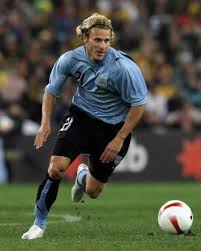European Union
Besides qualifying for euro 2008 or World Cup 2010 there are also international friendly matches.
Denmark vs Senegal
Match scheduled:
Date: 27-05-2010
Time: 20:00 until 22:00
Friendly Match - On the road to the World Cup 2010 [June] - Match also on TV2 DK

Watch live soccer TV
In the 1982 FIFA World Cup qualifiers, Denmark finished with 8 points from as many games, including a 3–1 win against eventual World Cup champions Italy, but Denmark failed to qualify for the final tournament despite the impressive result. Qualification for the Euro 1984 saw the team beat England at Wembley Stadium when Allan Simonsen converted a penalty kick for a 1–0 win. Denmark qualified for their first international tournament since 1964, and the team was dubbed "Danish Dynamite" in a competition for the official Danish Euro 1984 song.[4] Denmark's participation ended in the semi-final when the team lost on penalties to Spain, most remembered for Preben Elkjær's penalty miss, his shorts torn apart. Following the strong performance at the finals, the name of "Danish Dynamite" became a mainstay for the following decade of Danish national team football under coach Piontek.

Denmark made their first World Cup appearance in the 1986 FIFA World Cup, and with the attacking duo of Michael Laudrup and Preben Elkjær the team surprised the world, sweeping the group, including a 6–1 thrashing of Uruguay. In the second round Denmark once again faced Spain, and once more Denmark lost out. The team received a trashing of their own, losing 5–1, including four goals by Emilio Butragueño. The first Spanish goal was caused by a miss-timed backpass by Jesper Olsen to Butragueño, an unfortunate action subsequently coined as "a real Jesper Olsen" (en rigtig Jesper Olsen). The phrase would live on for 13 years when an identical backpass was carried out by Jesper Grønkjær to Filippo Inzaghi in Grønkjær's 1999 debut game.[5]
After the glory days of 1986 came a period of transition with faltering results. The Euro 1988 tournament ended in early defeat as Denmark lost the group games to Spain, Germany, and Italy. When Denmark failed to qualify for the 1990 FIFA World Cup Sepp Piontek was replaced by his assistant coach Richard Møller Nielsen.
[edit] 1992 European Champions
Denmark's finest hour in the international competitions came in the Euro 1992. The Danes initially failed to qualify, as they trailed Yugoslavia in their qualifying group. Michael Laudrup, the star of the team, decided to quit the national team during the qualification matches, following tactical differences with Coach Nielsen. However, due to international sanctions resulting from the Yugoslav wars, Yugoslavia was barred from the tournament, and Denmark entered as the second-placed team in its group. Contrary to popular belief[4] the team did not rally home from seaside vacations to compete, as the majority of players were already assembled to play a friendly match with the CIS when Denmark officially got the spot at the tournament.[6]
Relying heavily on goalkeeper Peter Schmeichel and his defense, as well as creative spark Brian Laudrup, the Danish team created one of the biggest surprises in the event's history, as they went on to win the European Championship trophy under coach Richard Møller Nielsen's defensive playing style. Advancing from the group stage ahead of England and France, Denmark beat the Dutch defending Euro 1988 champions on penalties in the semi-final, and with the 2–0 win against reigning 1990 FIFA World Cup champions Germany in the final, Denmark had won its first trophy.
Following the Euro 1992 win, Michael Laudrup revived his national team career in 1993. The following years Denmark saw mixed results as they failed to qualify for the 1994 FIFA World Cup, before securing a King Fahd Cup win, beating Copa América champions Argentina in 1995. As defending champions at the Euro 1996, Denmark disappointed with a lacklustre performance and the team was eliminated in the group stage. As controversy had occurred over the prolonging of Richard Møller Nielsen's contract in fall 1995, including a strained relationship with the press, he was let go. The new coach was the sympathetic Swede Bo "Bosse" Johansson, who gave the team a more offensive strategy, and the 1998 FIFA World Cup saw the revival of the Danish team, starring both Laudrup brothers in their last international campaign. After beating Saudi Arabia 1–0, drawing with South Africa and losing 2–1 to later champions France in mediocre games the Danish team qualified to the knockout stages as second in the group. In the next game however Denmark played some of the best football of the tournament beating Nigeria 4–1 and thus qualified to the quarterfinals against Brazil. The Danes went out with a beautiful 2–3 defeat to the later silver medalists in a very close and emotional game. Following yet another disappointing European Championship in the Euro 2000, with many players selected for the squad despite injuries and poor form, "Bosse" decided not to prolong his contract.



 took England to
took England to 

















